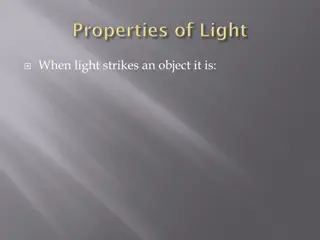Understanding Orange Shirt Day and the Impact of Residential Schools
Explore the significance of Orange Shirt Day, a national movement in Canada that honors survivors of Indian Residential Schools. Learn about the history of Residential Schools, their impact on Indigenous communities, and reflect on the importance of recognizing past injustices for healing and reconciliation.
Download Presentation

Please find below an Image/Link to download the presentation.
The content on the website is provided AS IS for your information and personal use only. It may not be sold, licensed, or shared on other websites without obtaining consent from the author. Download presentation by click this link. If you encounter any issues during the download, it is possible that the publisher has removed the file from their server.
E N D
Presentation Transcript
Indigenous Stories - Orange T-shirt Day 28th September 2020
Learning Objectives 1. I can identify periods of progress and decline, and identify key turning points that marked periods of continuity or change. 1. I can assess the significance of people, places, events, or developments at particular times and places. 1. Learning about Inequality issues and treatment of minority populations in the US and Canada.
What is Orange T-Shirt Day? Watch this video from founder Phyllis Webstad to find out!
Orange T-Shirt Day Is a national movement to recognize and acknowledge the experience of students of Indian Residential Schools, to honour the survivors and those who did not make it home. Orange Shirt Day began in 2013. This initiative asks for every Canadian to wear an orange shirt on September 30 in the spirit of healing and reconciliation. We will wear an Orange t-shirt this Wednesday.
Ice Breaker Task Find a Partner in the Room Face each other and study each other s appearance. Now turn back to back. I m going to count down from 20 to 0. During that time you should change 3 things about your appearance. When I get to 0, you will turn to face your partner and see if you can identify the 3 things that they changed about their appearance in the 20 seconds. The Goal is to be able to notice all 3 changes.
Ice Breaker Task: Reflection Discussion Questions: 1. Did you find it difficult to noticed what changed and what stayed the same? 2. Why do you think it was difficult or easy? 3. Does change happen in your life or here at school? Give examples? 4. How does history CREATE change in our lives etc? 5. How do we know when something has changed? 6. Do external changes mean that we have changed internally too?
Residential Schools Residential Schools were made mandatory for all First Nations children between the ages of 7 and 15 in 1920. Their purpose was to educate and assimilate Canada's native population and to "kill the Indian in the child". Thomas was Cree from the Muscowpetung Saulteaux First Nation (about 45 minutes north of Regina). He enrolled along with his brother Samuel and sister Julia. He was the 22nd student to enroll at the Regina Indian Industrial School and so became known as "No. 22". Thomas was sent home 4 years after enrolling because he had contracted Tuberculosis. He died shortly after. This is 8 year old Thomas Moore Keesick. This is him before and after his enrollment in one of Canada's many Residential Schools.
What's different? What's changed? I don't just mean in his outward appearance; what's changed for Thomas on the inside? How has his personality, knowledge, psychological well- being, and culture changed? Is his heart the same, or is it different?
[Gr. 6-7] 300 Sleeps Listen to and/or read 300 Sleeps by Jen Wiffin. - YouTube Link to Song - Reading Then complete the tasks on the following slide.
[Gr. 6-7] 300 Sleeps 1. What do you think are the top 3 most important words from the reading/song? Why did you choose these words? 2. According to the reading/song what were Residential Schools like? Why? 3. Time to draw a picture about the reading. Use words to describe what you drew.
[Gr. 8-9] How did Residential Schools impact the lives of Native Canadians? Read through these quotes from residential school survivors. Point: Choose ONE word that you think best captures the main idea for EACH quotation. Explanation: Explain WHY you chose that word to help you communicate your response to the investigation question above.
[Gr. 10] How was the Residential School experience like a Holocaust? This was our Holocaust. They did not kill us physically, but they killed us emotionally and spiritually. Mary Anna Nakogee-Davis, a victim of sexual abuse by a priest at the residential school she attended.
[Gr. 10] How was the Residential School experience like a Holocaust? Read through these quotes from other residential school survivors. Based upon the information in the quotes answer/discuss the following questions: 1. Was this a Holocaust as the victim on the previous slide describes? 2. What defines a genocide? Did the system of Canada s Residential Schools create a cultural genocide for Native Peoples?
Progress Has Been Made 1. The last residential school was closed in 1986 2. In 1998 the Canadian government publically apologized to former students who suffered physical and sexual abuse in the schools. 3. At the same time a $350 million government plan was created to aid Native American communities. 4. In 2007, after a class action lawsuit, the churches involved and the Candian government paid compensations to communities and individuals. 5. In 2013 Orange Shirt day begins, bringing the scope of the problem to the attention of more of Canada s population.
Reflection 1. What were your reactions when reading the stories from the survivors of Canada s residential school history? Why did you feel this way? 1. What is the significance of storytelling according to Indigenous cultures around the globe?























